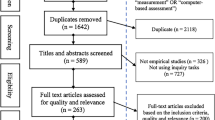Abstract
While recent studies employ heuristic to support learners in scientific inquiry learning environments, this study examined the theoretical and practical aspects of decision-theoretic approach to simultaneous reason about learners’ scientific inquiry skills and provision of adaptive pedagogical interventions across time. In this study, the dynamic learner model, represented by three different Dynamic Decision Network (DDN) models, were employed and evaluated through a three-phase empirical study. This paper discusses how insights gained and lessons learned from the evaluations of a preceding model had led to the improvements of subsequent model; before finalizing the optimal design of DDN model. The empirical studies involved six domain experts, 101 first-year university learners, and dataset from our previous research. Each learner participated in a series of activities including a pretest, a session with INQPRO learning environment, a posttest, and an interview session. For each DDN model, the predictive accuracies were computed by comparing the classifications given by the model with (a) the results obtained from the pretest, posttest, and learner self-rating scores, and (b) classifications elicited by domain experts based on the learner interaction logs and the graphs exhibited by each model.
Similar content being viewed by others
Explore related subjects
Discover the latest articles, news and stories from top researchers in related subjects.References
Frederiksen JR, White BY (1998) Teaching and learning generic modeling and reasoning skills. J Interact Learn Env 5(1):33–52
Linn MC (2000) Designing the knowledge integration environment. Int J Sci Educ 22(8):781–796
Loh B, Marshall S, Radinsky J, Mundt J, Alamar K (1999) Helping students build inquiry skills by establishing classroom norms: how teachers appropriate software affordances. In: Proceedings of annual conference of the American educational researchers association
Pryor A, Soloway E (1997) Foundation of science: using technology to support authentic science learning. http://hi-ce.eecs.umich.edu/papers/
Reiser BJ, Tabak I, Sandoval WA, Smith B, Steinmuller F, Leone TJ (2001) BGuILE: strategic and conceptual scaffolds for scientific inquiry in biology classrooms. In: Carver SM, Klahr D (eds) Cognition and instruction: twenty five years of progress. Erlbaum, Mahwah
White B, Frederiksen J, Frederiksen T, Eslinger E, Loper S, Collins A (2002) Inquiry island: affordances of a multi-agent environment for scientific inquiry and reflective learning. In: Proceedings of the fifth international conference of the learning sciences (ICLS). Erlbaum, Mahwah
Saunders W, Shepardson DP (1987) A comparison of concrete and formal science instruction upon science achievement and reasoning ability of sixth grade students. J Res Sci Teach 24:39–51
Krajcik J, Blumenfeld P, Marx RW, Fredericks J, Soloway E (2000) Institutional, curricular, and technological supports for inquiry in science classrooms. In: Proceedings of American association for the advancement of science. Washington
Alonzo AC, Aschbacher PR (2004) Value-added? Long assessment of students’ scientific inquiry skills. In: Proceedings of assessment for reform-based science teaching and learning, a symposium at the annual meeting of the AERA. San Diego
de Jong T (2006) Computer simulations: technological advances in inquiry learning. Science 312:532–533
Wenning C (2007) Assessing inquiry skills as a component of scientific literacy. J Phys Teach Educ Online 4(2):21–24
Van Joolingen WR, King S, de Jong T (1997) The SimQuest authoring system for simulation-base discovery environments. In: Proceedings of knowledge and media in learning systems. IOS, Amsterdam, pp 79–87
Paolucci M, Suthers D, Weiner A (1996) Automated advice giving strategies for scientific inquiry. In: Frasson C, Gauthier G, Lesgold A (eds) Proceedings of the 3rd international conference on intelligent tutoring systems, pp 372–381
Hulshof CD, Wilhelm P, Beishuizen JJ, Van Rijn H (2005) FILE: a tool for the study of inquiry learning. Comput Hum Behav 21:945–956
Dragon T, Woolf BP, Marshall D, Murray T (2006) Coaching within a domain independent inquiry environment. Lecture notes in computer science, vol 4053, pp 144–153
Shute VJ, Glaser R (1990) A large-scale evaluation of an intelligent discovery world: Smithtown. Interact Learn Environ 1:51–77
Veermans KH, Van Joolingen WR (2004) Combining heuristics and formal methods in a tool for supporting simulation-based discovery learning. Lect Notes Comput Sci 3220:217–226
de Jong T, van Joolingen WR (1998) Scientific discovery learning with computer simulations of conceptual domains. Rev Educ Res 68(2):179–201
Saunders W, Shepardson DP (1987) A comparison of concrete and formal science instruction upon science achievement and reasoning ability of sixth grade students. J Res Sci Teach 24:39–51
Reid DJ, Zhang J, Chen Q (2003) Supporting scientific discovery learning in a simulation learning environment. J Comput Assist Learn 19:9–20
Zhang J, Chen Q, Sun Y, Reid DJ (2004) Triple scheme of learning support design for scientific discovery learning based on computer simulation: experimental research. J Comput Assist Learn 20(4):269–282
van Joolingen WR, de Jong T (1993) Exploring a domain through a computer simulation: traversing variable and relation space with the help of a hypothesis scratchpad. In: Proceedings of simulation-based experiential learning, pp 191–206
Klahr D, Dunbar K (1988) Dual space search during scientific reasoning. Cogn Sci 12:1–48
Mayer RE (2004) Should there be a three-strikes rule against pure discovery learning? Am Psychol 59:14–19
Rieber LP, Parmley MW (1995) To teach or not to teach? Comparing the use of computer-based simulations in deductive versus inductive approaches to learning with adults in science. J Educ Comput Res 14:359–374
van Joolingen WR, de Jong T, Lazonder AW, Savelsbergh E, Manlove S (2005) Co-lab: Research and development of an on-line learning environment for collaborative scientific discovery learning. Comput Hum Behav 21:671–688
Löhner S, van Joolingen WR, Savelsberg ER, van Hout-Wolters B (2005) Students’ reasoning during modeling in an inquiry learning environment. Comput Hum Behav 21:441–461
Njoo M, de Jong T (1993) Exploratory learning with a computer simulation for control theory: learning processes and instructional support. J Res Sci Teach 30:821–844
Shute VJ, Glaser R (1990) A large-scale evaluation of an intelligent discovery world: Smithtown. Int Learn Res 1:51–77
Bunt A, Conati C (2003) Probabilistic student modelling to improve exploratory behaviour. J User Model User-adapt Interact 13(3):269–309
Murray RC, VanLehn K, Mostow J (2004) Looking ahead to select tutorial actions: A decision-theoretic approach. Int J Artif Intell Educ 14(3–4):235–278
Conati C (2002) Probabilistic assessment of user’s emotions in educational games. Special issue on merging cognition and affect in HCI. J Appl Artif Intell 16(7–8):555–575
Pek P, Poh KL (2005) Making decisions in an intelligent tutoring system. Int J Inf Tech Decis Mak 4(2):207–233
Kjaerulff U, Madsen A (2007) Bayesian networks and influence diagrams: a guide to construction and analysis. Springer, New York
Howard RA, Matheson J (1981) Readings on the principles and applications of decision analysis. Strategic Decisions Group, Menlo Park
Jensen FV (2001) Bayesian networks and decision graphs. Springer, New York
Russell S, Norvig P (2003) Artificial intelligence: A modern approach, 2nd edn. Prentice Hall, Englewood Cliffs
Ting CY, Phon-Amnuaisuk S, Chong YK (2008) Modeling and intervening across time in scientific inquiry exploratory learning environment. J Educ Tech Soc 11(3):239–258
Korb KB, Nicholson AE (2004) Bayesian artificial intelligence. Chapman & Hall, London
Pearl J (1988) Probabilistic reasoning in intelligent systems: networks of plausible inference. Morgan Kaufmann, San Mateo
Ausubel DP (1968) Educational psychology: A cognitive view. Holt, Rinehart and Winston, New York
Krajcik J, Blumenfeld P, Marx RW, Fredericks J, Soloway E (2000) Institutional, curricular, and technological supports for inquiry in science classrooms. In: Proceedings of American association for the advancement of science. Washington
Ting CY, Chong CY (2003) Enhancing conceptual change through cognitive tools: an animated pedagogical agent approach. In: Proceedings of the 3rd IEEE international conference on advance learning technology
Chi MT, Roscoe RD (2002) The processes and challenges of conceptual change. In: Limon M, Mason L (eds) Reconsidering conceptual change: issues in theory and practice. Kluwer Academic Publishers, Dordrecht, pp 3–27
Schafer R, Weyrath T (1997) Assessing temporally variable user properties with dynamic Bayesian networks. In: Proceedings of the sixth international conference UM97, pp 377–388
Ting CY, Beik Zadeh M-R, Chong YK (2006) A decision-theoretic approach to scientific inquiry exploratory learning environment. Lect Notes Comput Sci 4053:85–94
Ting CY, Phon-Amnuaisuk S (2009) Log data approach to acquisition of optimal Bayesian learner model. Am J Appl Sci 6(5):913–921
Author information
Authors and Affiliations
Corresponding author
Rights and permissions
About this article
Cite this article
Ting, CY., Phon-Amnuaisuk, S. Optimal dynamic decision network model for scientific inquiry learning environment. Appl Intell 33, 387–406 (2010). https://doi.org/10.1007/s10489-009-0174-y
Received:
Accepted:
Published:
Issue Date:
DOI: https://doi.org/10.1007/s10489-009-0174-y




